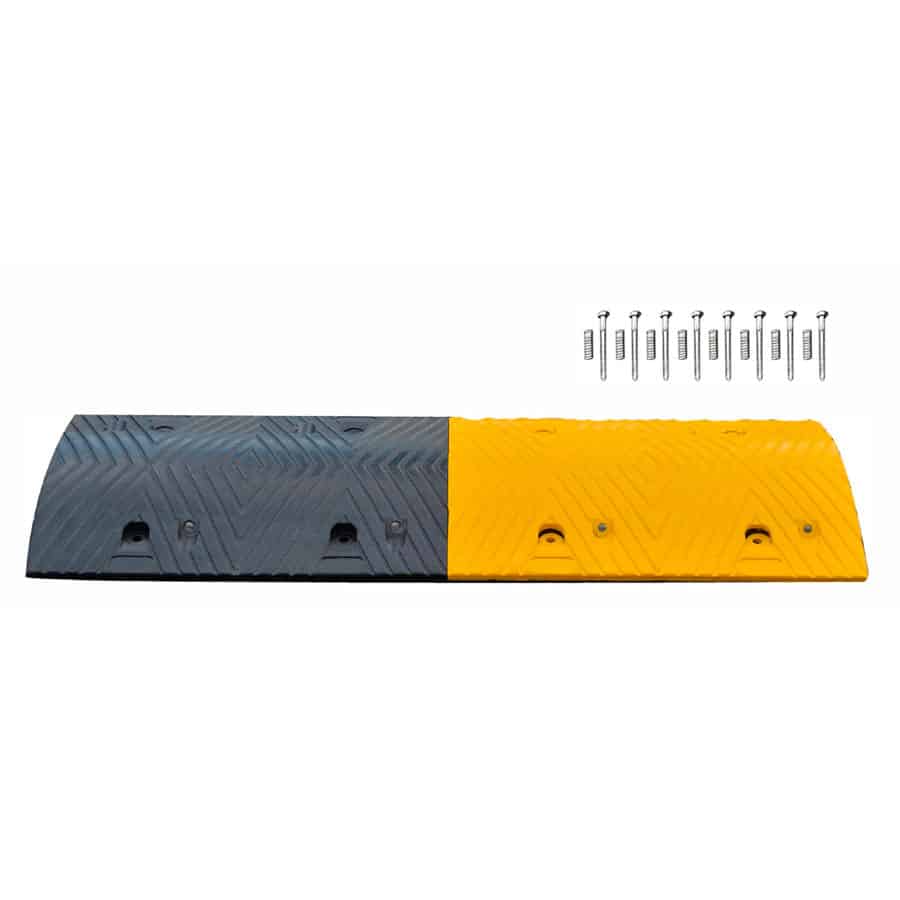Portable speed bumps are innovative traffic management solutions designed to improve safety and control vehicle speeds in various settings. These adaptable devices are increasingly popular in residential areas, schools, construction sites, and special events, where temporary speed control is essential. This article explores the features, advantages, and applications of portable speed bumps, shedding light on why they are an excellent choice for managing traffic flow effectively.
What Are Portable Speed Bumps?
Portable speed bumps are raised traffic control devices made from durable materials such as rubber or plastic. Unlike traditional speed bumps, which are fixed in place, portable versions can be easily installed and removed as needed. Their lightweight design allows for quick deployment and repositioning, making them suitable for environments that require flexible traffic management solutions.
Key Features of Portable Speed Bumps
- Lightweight and Easy to Handle: The design of portable speed bumps typically emphasizes ease of use. Made from lightweight materials, these speed bumps can be easily lifted and transported by one or two people, allowing for swift installation and removal as traffic conditions change.
- Versatile Sizes and Designs: Portable speed bumps come in various sizes, heights, and colors. This versatility ensures they can be customized to fit specific needs, whether for a busy parking lot, a school drop-off zone, or an outdoor event. Many models are also equipped with reflective markings or bright colors to enhance visibility.
- Durable Construction: Built to withstand various weather conditions and heavy traffic, portable speed bumps are constructed from materials that resist wear and tear. Rubber and heavy-duty plastic are common choices, providing resilience against UV rays, rain, and temperature fluctuations.
- Quick Installation: Unlike permanent speed bumps that require construction and approval processes, portable speed bumps can be set up in minutes. This rapid deployment is particularly beneficial in temporary situations, such as roadwork or community events.
Benefits of Using Portable Speed Bumps
- Enhanced Safety: The primary purpose of speed bumps is to reduce vehicle speeds, and portable speed bumps achieve this effectively. By placing them strategically in high-traffic areas, communities can significantly decrease the risk of accidents involving pedestrians, especially children and the elderly.
- Flexible Traffic Control: Portable speed bumps provide the flexibility to adjust traffic flow according to the situation. For example, they can be deployed during school hours to enhance student safety or removed after the school day when traffic is lighter. This adaptability makes them an ideal choice for environments with fluctuating traffic patterns.
- Cost-Effective Solution: Compared to the expense of installing permanent speed bumps, portable versions offer a cost-effective alternative. Their affordability, coupled with the ability to reuse them for multiple events or locations, ensures a good return on investment.
- Minimal Disruption: The quick setup and removal of portable speed bumps mean they can be used without causing significant disruptions to traffic flow. This feature is especially important in busy urban areas or during special events, where managing congestion is crucial.
Applications of Portable Speed Bumps
- School Zones: Portable speed bumps are commonly used in school zones to protect children during drop-off and pick-up times. Their visibility and ability to control speeds help create a safer environment for students as they cross streets.
- Construction Sites: In construction areas, where traffic patterns may change frequently, portable speed bumps can guide vehicles and maintain safe speeds around heavy machinery and workers. Their ease of use allows for quick adjustments as needed.
- Events and Festivals: During outdoor events, such as fairs or festivals, portable speed bumps can be deployed to control vehicle speeds in crowded areas. They help ensure pedestrian safety while allowing necessary vehicle access.
- Parking Lots: In large parking areas, portable speed bumps can be utilized to manage vehicle speeds, particularly in zones where pedestrians frequently move between parked cars. Their use can minimize accidents and improve overall safety.
Conclusion
Portable speed bumps are a practical and effective solution for managing vehicle speeds in various environments. Their lightweight design, durability, and ease of installation make them a valuable tool for enhancing safety in residential areas, schools, construction sites, and events. By providing flexible traffic control options, portable speed bumps contribute to creating safer and more organized spaces for both drivers and pedestrians. As communities continue to prioritize safety and efficiency, the demand for portable speed bumps is likely to grow, making them an essential component of modern traffic management strategies.










